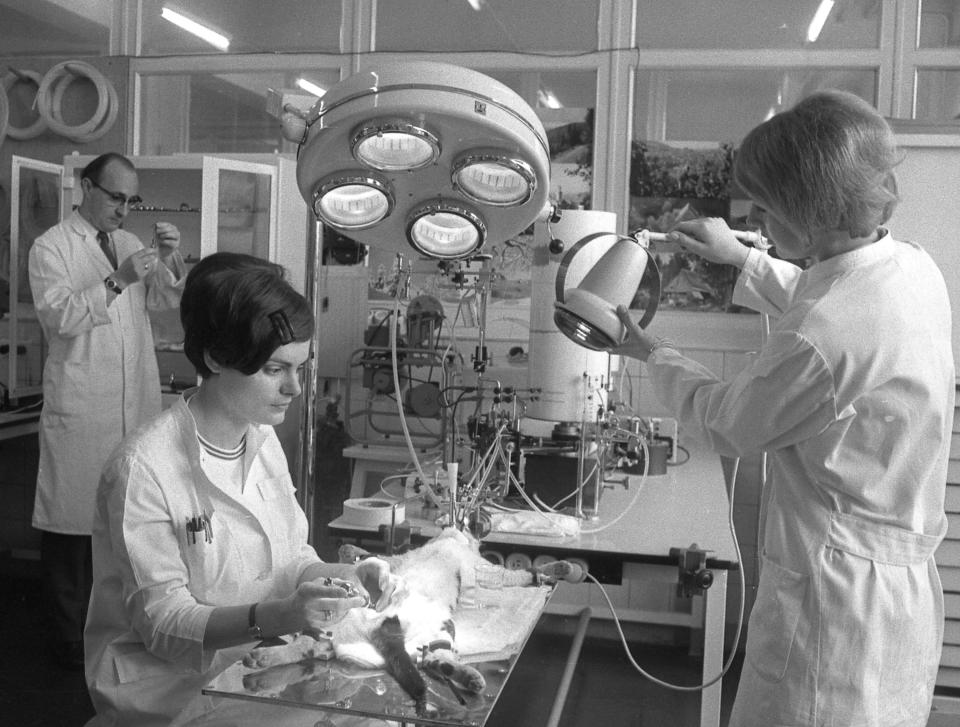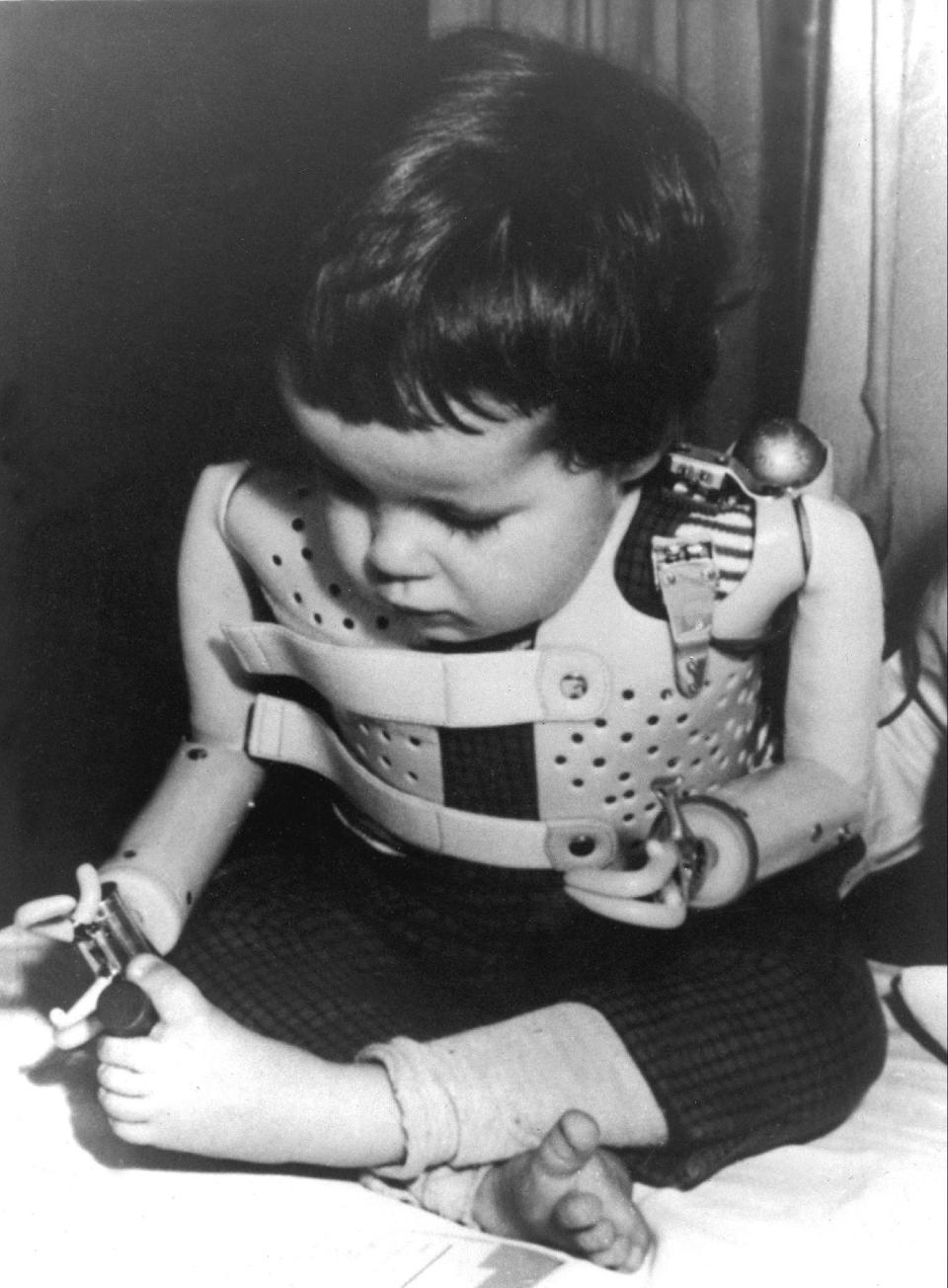Key dates in history of thalidomide
BERLIN (AP) — 1946— Gruenenthal, a German pharmaceutical, is founded in Stolberg.
1954 — Gruenenthal discovers and patents thalidomide.
1957 — Thalidomide is first sold as Contergan in Germany. It is mainly prescribed to treat anxiety and morning sickness in pregnant women.
1959 — Gruenenthal is first warned by a gynecologist that using the drug leads to deformities in babies.
1960 — U.S. Food and Drug Administration demands a toxicity study for thalidomide to prove it is safe in humans.
1960s — Thalidomide is marketed in Europe, Australia, Canada and Japan. The drug was never approved in the U.S.
1961 — Doctors in Germany, Australia and the U.K. notice a significant spike in the number of babies born with missing or shortened limbs. The birth defects are eventually linked to thalidomide and the drug is pulled from the market.
1962 — U.S. President John F. Kennedy awards FDA official Dr. Frances O. Kelsey the Distinguished Federal Civilian Service Medal for her diligence in blocking the approval of thalidomide.
1968 — German case launched by lawyers of families affected by thalidomide against Gruenenthal owner Hermann Wirtz and eight employees.
1970 — Gruenenthal offers to settle the case for 100 million Deutschmark.
1972 — Creation of foundation for German thalidomide victims. German state adds 100 million Deutschmarks to fund. In 2009, Gruenenthal adds a further €150 million; fund totals €150 million.
1998 — Thalidomide is approved by the FDA for treating a complication of leprosy.
2006 — Thalidomide is approved for treating multiple myeloma, a bone marrow cancer.
2012 — Australian thalidomide survivor wins multimillion settlement from British distributor, German maker Gruenenthal refuses to settle.
2012 — Gruenenthal apologizes to mothers who took the drug and asks for forgiveness.


